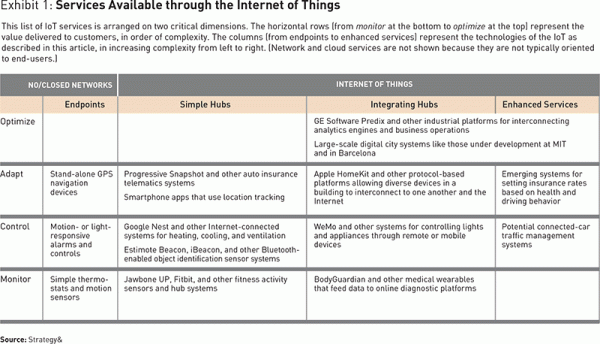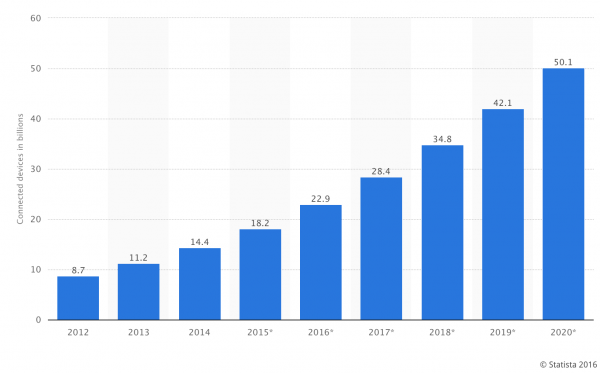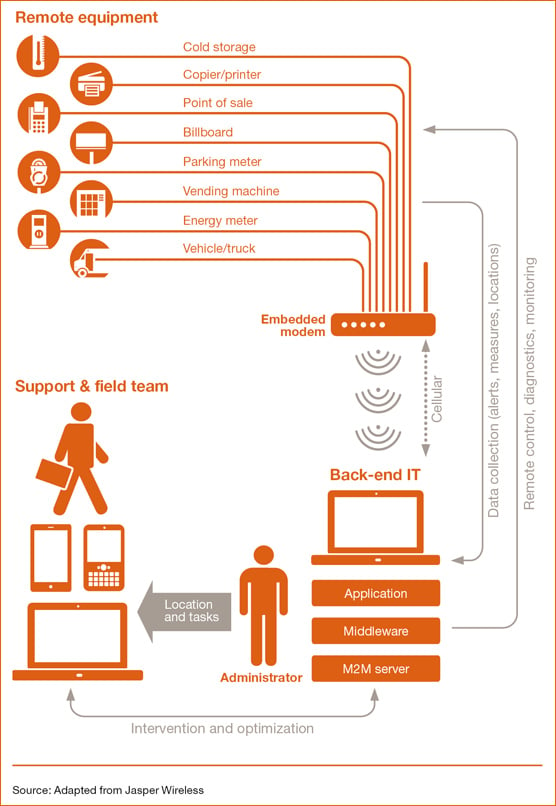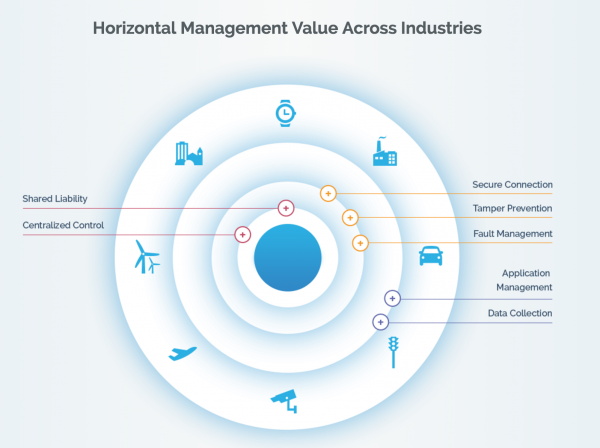
Any marketer recognizes the importance of a strong value proposition. Yet, the stakes are even higher in the Internet of Things (IoT) ecosystem. Differentiation is key with the IoT.
A value proposition is a clear statement of what is offered, how that offering stands out in its market, and how the enterprise will deliver on its promised offering — all captured all in a succinct statement.
Making strategy driven by the value proposition is foundational to successful marketing.
Why, though, is it even more essential in the IoT arena?
As our world becomes increasingly digital and connected, customer and business expectations are changing rapidly. Connectivity, itself, provides new business value to solutions and products, but IoT platforms change the perceived and tangible value of products and solutions.

The connected world is growing fast and the desire for such connectivity is real.

Intel places the number of internet connected devices even higher.
Our IoT world is growing at a breathtaking pace, from 2 billion objects in 2006 to a projected 200 billion by 2020.1 That will be around 26 smart objects for every human being on Earth!
Distinctive features; value to users--an expanding ecosystem.
With connected items, the enterprise must do more than provide an innovative product. In addition to the amazing physical product, IoT service, or solution offered, the marketing team must also engineer an excellent connected experience that is also meaningful or purposeful.
Successful IoT products and services will clearly outline distinctive features, value to customers and business, and the means of integrating into the larger ecosystem.
IoT marketing, then, must be smart about:
The IoT ecosystem is a rapidly changing one that demands agile thinking. All relevant teams need to be involved in the ownership and support of the value proposition--in how the solution meets the needs of buyers or adds distinct value. Expecting that one team will address only its area of expertise before handing off to another independently functioning team, can compromise value proposition efficacy and hurt the brand overall. See the infographic example below, from Jasper Wireless and PwC, which shows a cross section of the IoT stack in three general parts.

With so many possibilities, IoT businesses must determine the role they’ll play in the ecosystem. Strategy& identifies three strategic models — enabler, engager and enhancer. The enabler focuses on underlying technologies from endpoints to network and cloud services. Engagers make use of hubs and network and cloud services to provide market-facing offerings. Enhancers focus on value-added services extending and enriching customer engagement.
To stake a claim in the IoT, develop a clear view of strategy even as concerns about security, reliability, and standardization continue to challenge the enterprise eager to enter this area.
 From the website: https://internet-of-things-innovation.com/ -- Designed by Ironpaper.
From the website: https://internet-of-things-innovation.com/ -- Designed by Ironpaper.
How do you define a strong value proposition in the IoT?
Your value proposition strategy remains rooted in knowing the customer and identifying pain points as well as understanding the competitive marketplace.
Fundamentals of a Value Proposition
[What you offer ideal prospects] + [who have what pressing problem?] + [in what distinct way compared to the competition?] + [with what proof you’ll deliver on this promise?].
Know that a strong value proposition rests on four elements:
Nevertheless, with the IoT, strategy can be more iterative, shaped by the additional data gained from the product, device, service, or downstream or up-stack value. Use analytics and the deeper data insights available to drive more data-driven action and insure delivery of the highest value to help strengthen your IoT value proposition.
Remember, your connected solution may provide greater value when connected to partners or the larger IoT tech stack. The Internet of Things is relationship dependent. The true value of IoT is formed in the context of relationships.
Additionally, value propositions for the IoT must also consider common concerns and barriers to entry, such as security holes, failure detection and remote updates, cost and time-to-market, product silos, and bug-prone software. As IoT product mature, enterprises must rebuild trust and create compelling assurances of stability and reliability in both a consumer and B2B context.
Sources
Burkitt, F. (2014, November). A Strategist’s Guide to the Internet of Things.
Wooden, A. T. (2016, March 14). The Internet of Things Playbook: Taking a CX Focused Approach in Building Your Connected Experience.
Statista: https://www.statista.com/statistics/471264/iot-number-of-connected-devices-worldwide/
Intel, A Guide to the Internet of Things Infographic, https://www.intel.com/content/www/us/en/internet-of-things/infographics/guide-to-iot.html
by Jonathan Franchell, CEO of Ironpaper - For more tips and hacks: Need to remove a new line after h1 tags? Both web designers and SEO practitioners need to employ headline tags: H1, H2, H3 in several ways to improve web page structure and tag...

The marketing industry is transforming significantly due to generative AI and increasing market complexity. Gartner's prediction of a 25% decline in traditional search traffic suggests that the era of search engines is dying. AI tools, particularly...

The Crowded Arena of the IT Marketplace Updated December 2024 The Information Technology (IT) landscape is experiencing rapid growth and intensifying competition. IT spending is projected to reach nearly 5.1 trillion U.S. dollars in 2024, a...

Updated December, 2024 The field of digital marketing is evolving rapidly in response to new technology and changing buyer expectations. To help career-minded marketers, we’ve rounded up the top 10 skills needed to succeed in the field. These are...
